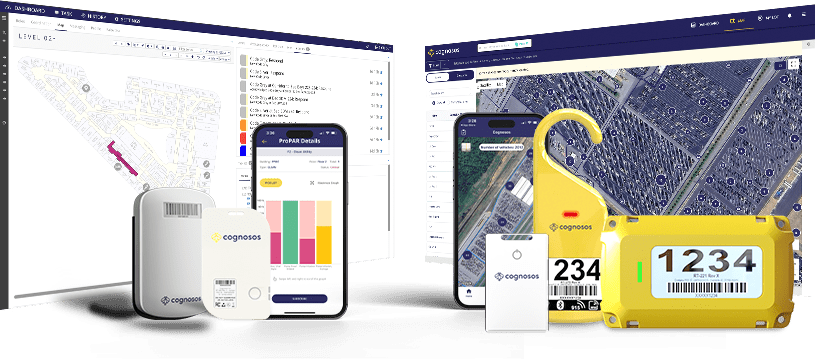In the realm of healthcare, where every dollar saved can be reinvested in patient care and facility improvements, the inefficiencies surrounding asset management can pose a substantial burden. Hospitals and healthcare facilities across the nation grapple with the perennial challenge of losing valuable medical equipment, an issue that drains millions of dollars from their budgets annually.
An article on Healthcare Dive reported that a San Jose, Calif., hospital lost more than $11 million in medical assets over a four-year period, and referenced another hospital in New York state that saw $50,000 of its missing medical equipment show up on eBay. These are not isolated incidents but rather alarming examples of the pervasive problem that healthcare providers face. According to statistics cited on Hospital and Healthcare Management, it’s estimated that “between 10% and 20% of a typical hospital’s mobile assets are lost or stolen during their useful life … at an average of $3,000 per item.”
Such losses are not only financially crippling but also detrimental to patient care. Providers are constantly striving to offer the best possible healthcare experience, and missing or misplaced critical equipment can lead to delays, suboptimal care, and compromised patient safety. It’s a conundrum that calls for a transformative solution, one that can simultaneously safeguard assets and streamline patient care.
Enter healthcare asset tracking with real-time location systems (RTLS) that offer room-level accuracy. In the following post, we’ll delve into three compelling use cases illustrating how this innovative technology has the potential to revolutionize asset management in healthcare facilities. By automating the tracking and monitoring of assets, RTLS not only provides cost savings, but also optimizes inventory management, empowers providers, and, most importantly, enhances patient care.
SEE ALSO: How a RTLS can help reduce hospital staff burnout
No More Dumpster-Diving: Immediate Alerts For Equipment In Trash And Laundry
Two of the biggest magnets for lost hospital equipment are the trash can and the soiled linen bin. When environmental services staff clean a room between patients, they work quickly, lifting and tying off bags and rolling up bed linens. They won’t be looking closely for a small but expensive medical device or piece of equipment, such as a sequential compression device, in the trash bag or between the bedsheets. Often, staff workflows involve taking the laundry and trash to holding areas on that floor, and the bags will remain there until they’re picked up and delivered to the loading dock for disposal offsite. Hospitals lose more equipment than they realize in this way — and because some small pieces of equipment can be expensive, they lose more money than they think, too.
Hospitals have a short window of time to recover the missing equipment before it leaves the floor, and a room-level asset tracking solution can help. The asset tracking system can be programmed to send an alert to staff the moment a tagged piece of equipment enters the trash or soiled linen holding room. That enables your staff to take quick action and recover the equipment when it’s located in one of two bins of soiled linen rather than sifting through 20 bins downstairs, or in just a few bags of trash instead of the entire Dumpster outside of the loading dock.
SEE ALSO: How to Automate your Mobile Equipment Management With Cognosos’ ProPAR
Pinpointing The Scene Of The “Crime”: Solutions For Accidental Patient Theft
Patients are another culprit in healthcare asset losses — although often by mistake. It’s not unusual for a patient to believe they’re supposed to bring a piece of equipment home with them to continue their treatment or recovery. Nor is it uncommon for patients to accidentally sweep a small piece of equipment into a bag as they’re packing up their things before a discharge. But hospitals aren’t like retail stores; there aren’t detectors at every exit waiting to go off when someone passes through them with something they shouldn’t have. And even if they did, hospitals don’t have security guards at the ready to stop such a patient as they leave the hospital. But if you have room-level equipment tracking, you have a fighting chance to get that equipment back.
Using your RTLS, you can identify the exact asset location before it went missing. Then you can cross-reference the information with your hospital’s electronic medical record (EMR). For example, imagine a sequential compression device goes missing after being in room 412 West on Friday, December 10, at 4 p.m. You go to your EMR administrator and learn that Mrs. Jones was discharged at around that time and received compression therapy in 412 West from Dec. 8 to Dec. 10. You surmise Mrs. Jones may have the item, so you place a polite call to ask if that’s the case. If it is, you can offer to send her a FedEx box, ask her to pack up the item, and schedule for FedEx to pick it up. It’s a win-win: You get your equipment back, and she’s spared the inconvenience (and potential embarrassment) caused by the mistake.
SEE ALSO: The Right – And Wrong – Ways To Leverage BLE For RTLS In Hospitals
Creating A “Hawthorne Effect:” Discouraging Employee Theft
Most hospital employees do not engage in equipment theft. But the unfortunate truth is it does happen because hospital equipment is a lucrative commodity on the secondary market (revisit the eBay resale mentioned in the first paragraph of this post as an example).
An RTLS can serve as a deterrent by creating a Hawthorne effect. This is the theory that people will change their behavior when they know they’re being watched — like what happens when a person chooses not to steal something when they see a video camera in the corner of a department store or a security system sticker in the window of a home. If you let staff know that all hospital equipment is being tracked using a room-level RTLS, it can serve as a deterrent to anyone considering taking something pricey, such as a diaper scale or a ventilator, off the premises.
The Takeaway
The Cognosos RTLS can help your hospital reduce these common — but preventable — types of equipment loss, leading to substantial savings for your bottom line. To learn more about these and other benefits of our room-level RTLS technology, schedule a demo today.



